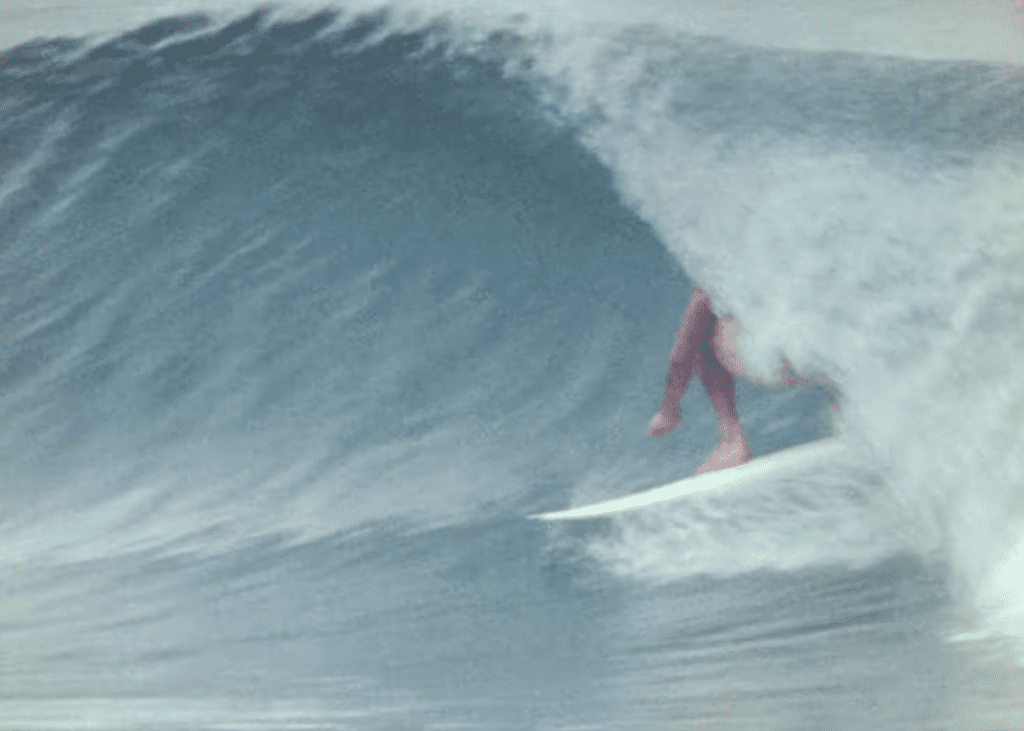Regarding The Subjective Value Of Fashionably Old Surfboards
Tanner Gudauskas and a fundamental Australian artifact.
Hidden in vintage surfboards, lies a dormant wealth of forgotten feelings inscribed by the planers of old.
Maybe not higher “performing” feelings, but certainly nostalgia inducing ones.
Anyone who follows Joel Tudor on Instagram knows that there’s value in that nostalgia —and in the respect for the fundamentals of modern board building. Just ask Noa Deane about his fiberglass inheritance. Determining that value, however, is almost entirely subjective.
There are no corporations or large scale retailers —aside from Birds Surf Shed — setting prices on old Campbell Brothers’ bonzers or Skip Frye twinnies. Original sale prices and potential “profit margins” on such vintage boards vary so much that two similar boards could sell at a $1000 difference.
“For me, [the value] is in what the board says, about either who shaped it, who rode it, what time of surfing’s history it was developed in, or who’s influences went into the board,” says Eric “Bird” Huffman. “Most of the [expensive] boards that I’ve appraised haven’t generally been cherry, never-ridden boards. Most of them have a story.”
The board Tanner Gudauskas tracked down for his new ‘Finders Keepers’ happens to be a bit of both — never ridden, with a ripe story behind it.

A Michael Peterson handshape, endowed with a soft yellow cutlap and elegant single fin.
Who is Michael Peterson?
A brilliant, rebellious, three time Australian national champion, whose dark charisma and fabled toxicity has been likened endlessly to Malibu icon Miki Dora. Though, I’m sure they would both resent the comparison.
Michael starred famously in Alby Falzon’s “Morning Of The Earth” and is considered by some to be the greatest Kirra surfer ever.
Erratic, shy, hotly tempered, and madly talented, Michael’s brief career as a pro surfer was marked by drug-use and reclusive behavior. After winning the 1977 Stubbies Pro amidst complete and utter intoxication, Michael quit competitive surfing. A few years later, he quit surfing altogether, and was subsequently arrested in a high-speed car chase from Kirra to Brisbane; after which he told police he was a CIA agent and was being followed by Russian spies.

Finding one of his boards in absolutely perfect condition is a noteworthy accomplishment, especially considering Peterson himself believed his shaping ability was the root of his competitive success.
“After a lot of thinking and shaping, I’ve got it down to perfection. That’s why I can win any contest, because my equipment is dead right.” Michael once said. “I’m a sportsman. I keep fit and I go surfing when I can. But I swear to God, and this is no bullshit, I’ve really got [shaping] down. I could jump on someone else’s board and not do so well. Okay, I’ve got a certain amount of ability, I’m well-balanced, I’m light-footed. But on someone else’s board I couldn’t have pulled off those contests.”
What monetary value do these stories — and Michael’s mystic fingers — bestow upon this given surfboard?
Bird ballparked $2500, and Tanner paid $1500.
Not too shabby — but very subjective.
We’re just glad the board ended up under Tanner’s feet on some Lowers lefts, and that he shared the process of finding and learning about it.
Tune in for a who’s who of surf artifact appreciation — featuring Tom Servais, words from Jeff Divine, and of course, Bird.















Comments
Comments are a Stab Premium feature. Gotta join to talk shop.
Already a member? Sign In
Want to join? Sign Up